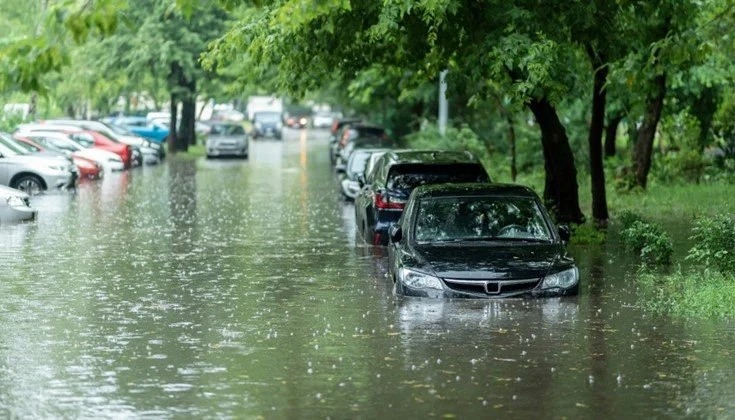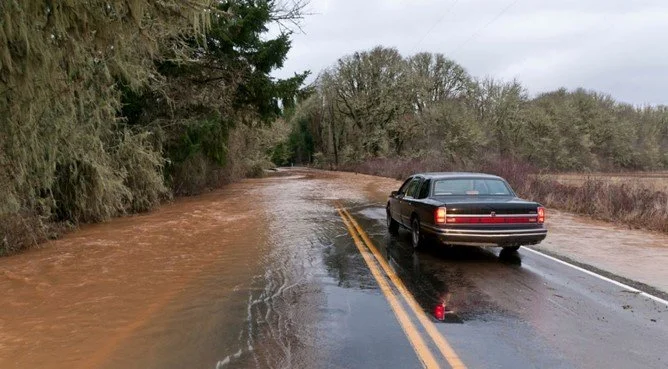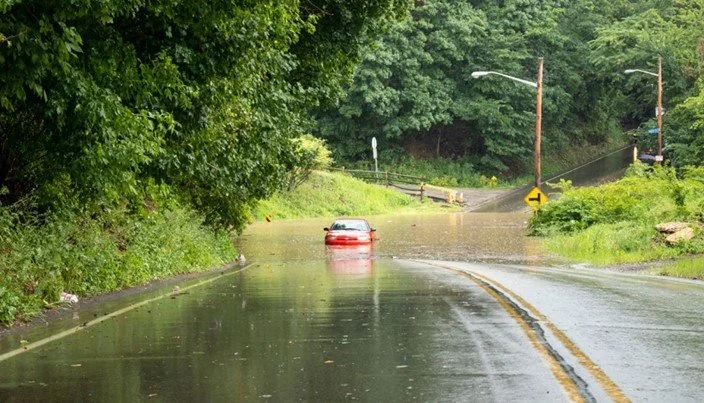Does Car Insurance Cover Floods and Water Damage?
Summary:
Comprehensive Insurance Coverage: Comprehensive car insurance covers water damage from floods, rain and hailstorms but excludes damage due to poor maintenance or negligence. It does not cover personal items inside the vehicle, which may be covered under homeowners or renters insurance instead.
Risks of Water Damage: Water can damage the engine, electrical systems, upholstery and interior, and cause rust, mold or contamination. Electric vehicles face additional risks, such as battery overheating. Flood insurance typically excludes vehicle coverage.
What to Do After Flood Damage: Avoid starting a flooded car to prevent further damage. Notify your insurance provider, document the damage, remove standing water, and follow specified procedures, such as drying the interior and treating mold or rust.
If your car is damaged due to flooding or other water damage, you are likely wondering if your car insurance covers the loss. The answer: It depends. Basic liability-only insurance policies will not cover damage from losses such as these. In order to be protected, your policy generally needs to include comprehensive coverage.
What is comprehensive coverage?
Comprehensive insurance covers damage to your vehicle from losses unrelated to collisions, such as theft, vandalism, natural disasters and fire. It also covers damage from falling objects and contact with animals.
While liability coverage is required by most states, comprehensive coverage is typically optional. However, if you have a loan or are leasing your vehicle, the lienholder might require you to purchase comprehensive coverage at a certain minimum level.
Comprehensive insurance typically covers water damage from flooding, rain and hailstorms. If you don’t purchase comprehensive insurance, repairs for damages due to these types of losses will come out of your own pocket.
How can water damage your car?
It is easy to see how a car can become damaged when parked on a flooded street, as water rises to surround the car. Even an intense rain might cause water to enter your vehicle. Your car can sustain damage during a hailstorm, causing it to get dented and allowing water to enter through a broken window.
Damage to a car can also occur when driving through floodwaters. The transmission, engine, brakes and electrical system can be damaged. Even if you’re confident your car could drive through floodwaters without a problem, you might have issues with rust and corrosion down the line. Even worse, that water could be hiding a much more immediate and life-threatening danger like potholes or downed powerlines.
Potential ways water can damage your car:
Engine damage – Water can enter the engine’s cylinders, preventing the pistons from moving.
Electrical damage – Water can cause short circuits, electrical malfunctions and corrosion.
Fluid contamination
Rust and corrosion
Mold
Damage to interior carpeting, upholstery and trim
Debris, silt and other contaminants can enter the interior of the vehicle and engine
Damage to personal property inside your car
Damage to aftermarket electronics, such as dash cams and stereo systems
It is important to note that not all of these losses will necessarily be covered, even if you have comprehensive insurance.
Electric vehicles can suffer similar losses when involved in a flood. In addition, there is the risk of thermal runaway from lithium-ion batteries, when a short circuit causes the battery to overheat and potentially catch fire. This risk is increased when the flooding is due to saltwater, which is corrosive.
What types of water losses are generally covered by car insurance?
Comprehensive insurance may cover losses from sudden and accidental damage to your car during a covered event. This means that your insurance may pay to repair or replace your vehicle if it is damaged by flooding or storms, minus your deductible. You will want to consult your car insurance policy for specifics on your coverage and policy limits.
What types of water losses are generally not covered by comprehensive coverage?
Comprehensive coverage will not cover water damage that results from poor vehicle maintenance. For example, if water gets into your car due to a failed seal in the sunroof, it is unlikely your insurance company will pay for the damage under your comprehensive coverage, as it is your responsibility to keep your car in good condition. Similarly, you likely won’t be covered if you leave a car window open, allowing water to enter during a storm.
Even if you have a covered loss, comprehensive insurance does not typically include coverage for the loss of personal items in your vehicle, including:
Electronics, such as GPS devices, dash cams and removable sound equipment
Phones, tablets and laptops left in vehicles
However, these items may be covered under a homeowners or renters insurance policy instead.
Do you need flood insurance to cover damage to your vehicle from a flood?
Flood insurance typically excludes vehicles from coverage. Flood insurance is designed to help protect building structures and their contents. Standard flood insurance policies exclude vehicles, like ATVs, golf carts, motorcycles and watercraft.
What should you do if you encounter floodwaters while driving?
The best advice to remember when you encounter flooding while driving is, "turn around, don’t drown." You want to keep yourself safe, as it is easy for floodwaters to seem calm, but then sweep away a car in an instant. Head for higher ground, if possible, staying in the middle of the road to avoid deeper pockets of water on the sides. Once you have passed the flooded area, test your brakes to check for any issues.
If your car stalls while driving through water, do not attempt to turn it back on. Exit the vehicle when safe and head to higher ground.
What should you do when your car has been involved in a flood?
Do not attempt to start your car’s engine if it has been flooded. Doing so could cause permanent damage to the engine and electrical system.
Steps to take after a flood:
Contact your auto insurance carrier to process claims.
Document the condition of your vehicle with photos and video. Look for a high-water mark to see how high the water level went inside the car.
Remove water from the interior of your vehicle using a wet/dry vacuum. Keep the windows/doors open to allow moisture out and use industrial fans to speed up the drying process.
Treat any appearance of mold or rust.
Follow your insurance company’s instructions regarding disconnecting the battery and towing the car to a repair facility.
How to help prepare yourself for potential floods or water damage
Having sufficient insurance coverage is the best way to help protect yourself from potential losses. Insurance companies often institute “binding restrictions” when storms are predicted, prohibiting new policies from being issued and changes from being made to current policies. That is one of the reasons you need to ensure you always carry sufficient coverage
Compliments of AAA
Dan Zeiler
dan@zeiler.com
877-597-5900 x134




